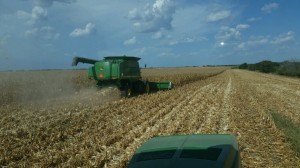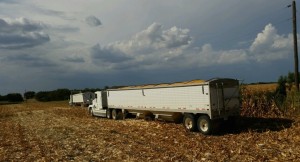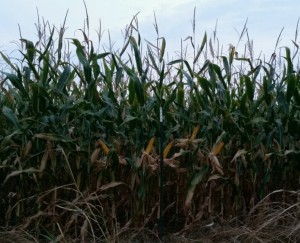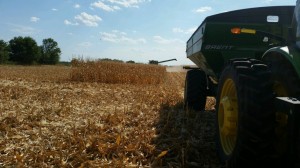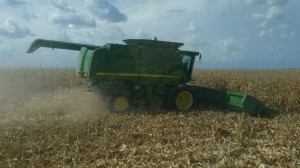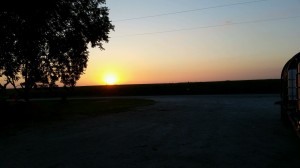Summer is officially over!
The 2014 US College Football season has begun.
At precisely 7:00 PM Eastern Time on Thursday, August 27, the Abilene Christian Wildcats took the field against the Georgia State Panthers at the Georgia Dome in Atlanta, Georgia in the first scheduled contest of the new college football season.
Gridiron mania and the race to the bowls are upon us.
In the US, a bowl is not a kitchen utensil. It is an invited end-of-season contest between two football teams who have prevailed through the season with a record and ranking that has earned them “bowl-eligible” status. And, for the final bowl of this season, two teams will compete and the winner will be crowned the National Champion of US College Football.
But, wait, the rules have changed.
Yes, there will be bowl games. In fact, there will be 39 bowl games. In total, 76 teams will be invited, more than ever before, in more bowls than ever before.
“Hold up, there!” you interrupt. “The numbers do not compute. 39 bowls, at two teams each, would require 78 teams to play those bowls. You only said 76. What’s going on here?”
Exactly, something new is going on here. This year, there will first be 76 teams in 38 bowl games. The last two of these 38 bowls will be the Semifinals of the new College Football Playoff (CFP). That’s right, the old Bowl Championship Series (BCS) selection system to determine the top college football teams is out. A new system is in. The CFP is in.
This new system is a Plus-One System, because a final bowl, the last and 39th bowl, has been added. This new add-on bowl is the new Championship Game. In this plus-one game, the two teams prevailing in the Semifinals will play each other — to the delight of clapping and jumping and cheering fans everywhere.
For the first time, college football has a playoff.
The top four selected teams in the country will play in the two semifinal bowl games, and the winners will play again for the National Title. This is the first time in the history of the bowls that two teams will play in two bowls. The old BCS adage “A bowl for each and each a bowl” is out. The College Football Playoff is in, two teams will play twice in two bowls, and the plus-one winner will be the uncontested National Champion.
Will wonders never cease? Apparently not. Condoleezza Rice, the former US Secretary of State, will serve as one of the 13 members of the new CFP Selection Committee. She joins a current athletic director from each of the five major US football conferences (ACC, Big Ten, Big 12, Pac-12 and SEC) and an assortment of other former coaches, players, administrators and a lone retired reporter. Quite the crowd.
The new Group of 13 will meet at the Gaylord Texas Hotel in Grapevine, Texas, 15.7 miles from where I sit typing. By secret ballot, the group will determine and release to the world their Top 25 College Football Teams of the week. The selection committee will do this for the final seven weeks of the sixteen-week season. The first of the seven CFP rankings will be released October 28, 2014.
The top four teams in the final CFP ranking on Sunday, December 7, 2014, will be the four teams going to the Semifinal Bowl Games. This year’s Semifinal Bowls will be the Rose Bowl in Pasadena, California, and the Sugar Bowl in New Orleans, Louisiana. On a three-year cycle, the Semifinals will rotate from Rose/Sugar to Orange Bowl (Miami Gardens, Florida)/Cotton Bowl (Arlington, Texas) to Fiesta Bowl (Glendale, Arizona)/Peach Bowl (Atlanta, Georgia) and back again to Rose/Sugar for the next three-year cycle of semifinals.
Each year, these six top-tier bowls will be played on two consecutive days that include New Year’s Day. Together, the two semifinals (with teams ranked #’s 1-4) and the other four bowls (with teams ranked #’s 5-12, although the Selection Committee has some flexibility to choose lower-ranked teams for these bowls) will be presented to the world as the “New Year’s Six.”
On the first Monday that is six or more days after the Semifinals, the Championship Game, plus-one #39, will be held at a location selected based on bids submitted by cities. For this first College Football Playoff year, the AT&T Stadium in Arlington, Texas, 24.4 miles from where I sit typing, has been selected as the site of the Plus-One, It’s-Number-39, College Football Playoff Championship Game.
Wow. I can see why they chose Former Madam Secretary Rice for the Selection Committee. That is a lot of meeting, talking, discussing, thinking and secret balloting to get to Arlington and the final game.
Not to worry. The smart guys and gal in the back room will make their selections. Ours is the joy of watching the run and viewing the games. We are in Week #1 of 16 Weeks of Glorious College Football. My teams are playing this Thursday, Friday, Saturday and Sunday, as they will every week for the next sixteen. And, don’t forget to check the score for the Wildcats and the Panthers. It was the first of many and one more. . . .
What a joy to be through the sports doldrums of summer.
On to the stadiums and the fun.
Grandpa Jim

